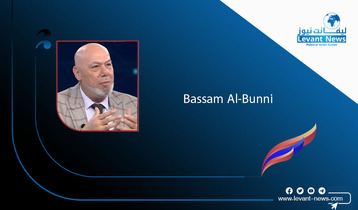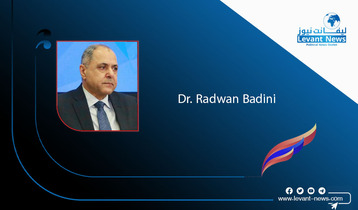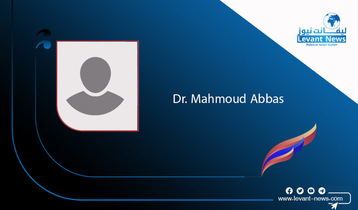-
Syria’s Chemical Legacy

This week a newly empowered unit at the Organisation for the Prohibition of Chemical Weapons (OPCW) is expected to point the finger at the Assad regime as responsible for a series of chemical attacks during the country’s over nine year civil war. Chemical Legacy
Whilst confirmation of what most observers already knew won’t be a game changer that will alter the fundamental trajectory of the conflict, it is an important landmark towards future accountability efforts with consequences in terms of sanctions in the near term.
The use of chemical weapons has been a strategic catalyst throughout the conflict. The fact that the Regime was willing to use them showed how desperate it was, especially in the earlier years when it’s survival was in question. Since then the use of the weapons has reflected a growing confidence that Damascus will be protected from any serious sanction and is part of the growing fog of impunity that has enveloped the country.
The Syrian regime must have realised that using this tactic would bring greater international attention on their actions, after all, the US-Russian agreement back in 2013 on disarming Syria's chemical weapon stock was a major junction in preventing more overt US intervention. Many had thought that the use of these barbaric weapons, truly the worst of humanity, would signify the ‘red line’ that President Obama outlined as a way of constraining Assad’s behaviour.
Before the conflict Syria was estimated to have access to several hundreds of tonnes of sulphur mustard, several hundreds of tonnes of sarin, and several tens of tonnes of the more potent and persistent nerve agent, VX. The US has said the Syrian military has access to "thousands of munitions" that could be used to deliver chemical agents, including long- and short-range missiles, aerial bombs and artillery rockets. Chemical Legacy
In messy, largely urban, civil wars the tactical use of chemical weapons was limited and instead they symbolised a weapon of terror that would often trigger the movement of large numbers of civilians fleeing the area. The weapons have their own legal prohibitions and gatekeepers in the form of the OPCW - although it is only now that they have been mandated to point the finger at who is responsible for using the weapons.
The ‘terror’ value of the weapon is usually linked to the means of death. As footage has shown painful suffocation caused by inhaling the toxins is a slow and drawn out process. What is more, unlike conventional weapons that tear bodies apart and leave scenes that cannot be shown on mainstream media, often chemical attacks can leave victims without any apparent injuries. Images of lines of entire families, seemingly sleeping, were able to be on the front page of papers and have been shared more widely than even more deadly conventional attacks.
Arguably the ultimate chutzpah of the Regime to date in ignoring the prohibition of such weapons was the used of them in the Ghouta area of Damascus that killed some 1,400 people in 2013 - taking place three days after the arrival of a UN mission charged with looking into previous chemical weapons attacks. Chemical Legacy
Roll forward a few years and more than 80 people were killed in a chemical attack on the rebel-held town of Khan Sheikhoun in north-western Syria on the 4th April 2017. Hundreds suffered symptoms consistent with reaction to a nerve agent after what the opposition and Western powers said was a Syrian government air strike on the area.
The chemical attack would trigger international response like conventional attacks hadn’t. President Trump ordered US missile strikes against the airbase that the chemical attacks were launched from. Trump went on to explain US attacks as being in response to what was “a slow and brutal death for so many. Even beautiful babies were cruelly murdered in this very barbaric attack. No child of God should ever suffer such horror”.
Chemical horror apparently is an unacceptable horror compared with the other horrors unleashed in Syria, although they’ve continued to occur becoming one of the defining tactics that explains the character of the conflict. This week’s report is accompanied by a new dataset put together by Researchers from the Global Public Policy Institute in Berlin along with Syrian and international partners who have compiled 345 credibly substantiated or confirmed attacks across the country since 2011, building on what the institute described as years of painstaking research. Chemical Legacy
levant
The most explicit ‘naming and shaming’ of the perpetrators of chemical attacks to date will likely lead to further sanctions of the Syrian government and individuals and organisations within it. It will also make Damascus’s attempts to find reintegration into the international community that much harder in the medium term. In the long term as Martin Luther King reminded us - “the arc of the moral universe is long but it bends toward justice”. One day those who made the decisions to drop nerve gas on women and children may well have to answer for their crimes and it will be the evidence released this week that may convict them. levant
You May Also Like
Popular Posts
Caricature
BENEFIT AGM approves 10%...
- March 27, 2025
BENEFIT, the Kingdom’s innovator and leading company in Fintech and electronic financial transactions service, held its Annual General Meeting (AGM) at the company’s headquarters in the Seef District.
During the meeting, shareholders approved all items listed on the agenda, including the ratification of the minutes of the previous AGM held on 26 March 2024. The session reviewed and approved the Board’s Annual Report on the company’s activities and financial performance for the fiscal year ended 31 December 2024, and the shareholders expressed their satisfaction with the company’s operational and financial results during the reporting period.
The meeting also reviewed the Independent External Auditor’s Report on the company’s consolidated financial statements for the year ended 31 December 2024. Subsequently, the shareholders approved the audited financial statements for the fiscal year. Based on the Board’s recommendation, the shareholders approved the distribution of a cash dividend equivalent to 10% of the paid-up share capital.
Furthermore, the shareholders endorsed the allocation of a total amount of BD 172,500 as remuneration to the members of the Board for the year ended 31 December 2024, subject to prior clearance by related authorities.
The extension of the current composition of the Board was approved, which includes ten members and one CBB observer, for a further six-month term, expiring in September 2025, pending no objection from the CBB.
The meeting reviewed and approved the Corporate Governance Report for 2024, which affirmed the company’s full compliance with the corporate governance directives issued by the CBB and other applicable regulatory frameworks. The AGM absolved the Board Members of liability for any of their actions during the year ending on 31st December 2024, in accordance with the Commercial Companies Law.
In alignment with regulatory requirements, the session approved the reappointment of Ernst & Young (EY) as the company’s External Auditors for the fiscal year 2025, covering both the parent company and its subsidiaries—Sinnad and Bahrain FinTech Bay. The Board was authorised to determine the external auditors’ professional fees, subject to approval from the CBB, and the meeting concluded with a discussion of any additional issues as per Article (207) of the Commercial Companies Law.
Speaking on the company’s performance, Mr. Mohamed Al Bastaki, Chairman BENEFIT , stated: “In terms of the financial results for 2024, I am pleased to say that the year gone by has also been proved to be a success in delivering tangible results. Growth rate for 2024 was 19 per cent. Revenue for the year was BD 17 M (US$ 45.3 Million) and net profit was 2 Million ($ 5.3 Million).
Mr. Al Bastaki also announced that the Board had formally adopted a new three-year strategic roadmap to commence in 2025. The strategy encompasses a phased international expansion, optimisation of internal operations, enhanced revenue diversification, long-term sustainability initiatives, and the advancement of innovation and digital transformation initiatives across all service lines.
“I extend my sincere appreciation to the CBB for its continued support of BENEFIT and its pivotal role in fostering a stable and progressive regulatory environment for the Kingdom’s banking and financial sector—an environment that has significantly reinforced Bahrain’s standing as a leading financial hub in the region,” said Mr. Al Bastaki. “I would also like to thank our partner banks and valued customers for their trust, and our shareholders for their ongoing encouragement. The achievements of 2024 set a strong precedent, and I am confident they will serve as a foundation for yet another successful and impactful year ahead.”
Chief Executive of BENEFIT; Mr. Abdulwahed AlJanahi commented, “The year 2024 represented another pivotal chapter in BENEFIT ’s evolution. We achieved substantial progress in advancing our digital strategy across multiple sectors, while reinforcing our long-term commitment to the development of Bahrain’s financial services and payments landscape. Throughout the year, we remained firmly aligned with our objective of delivering measurable value to our shareholders, strategic partners, and customers. At the same time, we continued to play an active role in enabling Bahrain’s digital economy by introducing innovative solutions and service enhancements that directly address market needs and future opportunities.”
Mr. AlJanahi affirmed that BENEFIT has successfully developed a robust and well-integrated payment network that connects individuals and businesses across Bahrain, accelerating the adoption of emerging technologies in the banking and financial services sector and reinforcing Bahrain’s position as a growing fintech hub, and added, “Our achievements of the past year reflect a long-term vision to establish a resilient electronic payment infrastructure that supports the Kingdom’s digital economy. Key developments in 2024 included the implementation of central authentication for open banking via BENEFIT Pay”
Mr. AlJanahi concluded by thanking the Board for its strategic direction, the company’s staff for their continued dedication, and the Central Bank of Bahrain, member banks, and shareholders for their valuable partnership and confidence in the company’s long-term vision.
opinion
Report
ads
Newsletter
Subscribe to our mailing list to get the new updates!





















